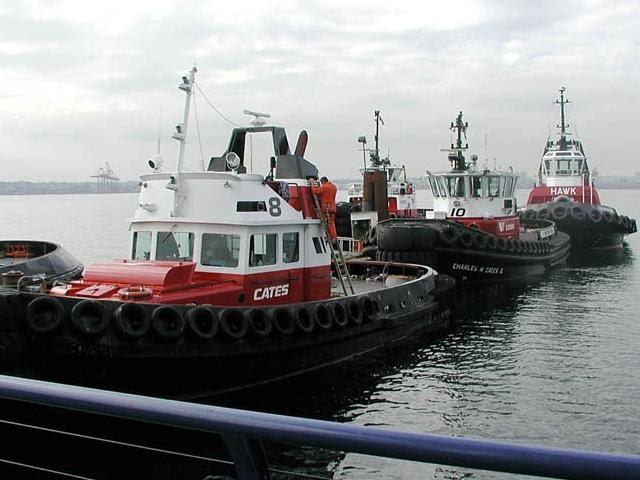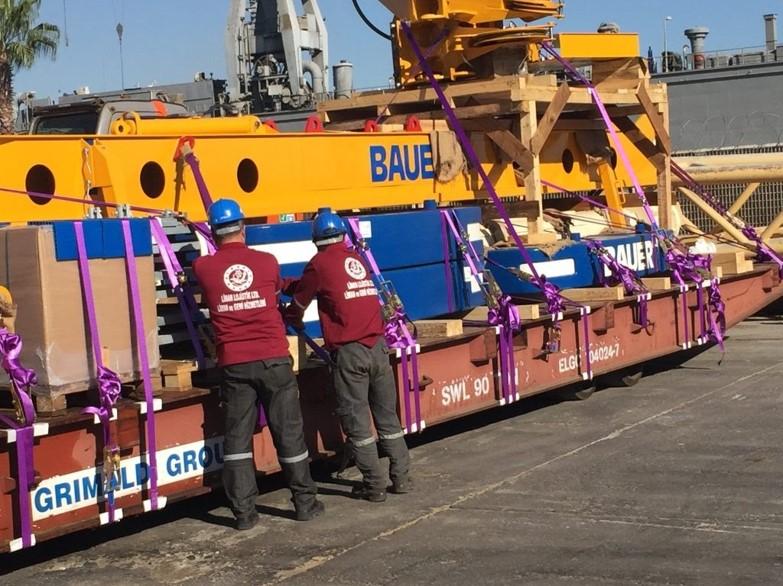Types of Port Charges
Stevedoring:
- Stevedoring refers to the function/process of loading and discharging cargo from a ship.
- Stevedoring costs should be directly related to the costs involved in handling commodities.
- The stevedoring charge is usually levied per freight ton, metric ton, cubic meters or TEU of cargoes.
- Stevedoring firms often reserve the right to calculate the charge on the volume or weight of the cargoes.
Wharfage
- Wharfage is a charge assessed by a shipping terminal/port when goods are moved through the port location/dock/pier.
- Wharfage is normally a cargo-related charge to recover the costs associated with the provision of the basic infrastructure and superstructure of the port to facilitate the movement of cargo from shipside to hinterland and vice versa.
- It includes the costs of providing roadways, railways, quays, parking areas, transit shed facilities, police surveillance etc.
- Similar to port dues, wharfage is charged by freight ton, metric ton, cubic meters or TEU, and its differentiation unit is the type of cargo.
Pilotage
- Pilotage is the process of guiding the vessel in and out of the port/harbor.
- Pilotage arises in two areas: the seaway gaining access to the river estuary and the port area itself. In many instances, the pilot service is compulsory.
- The pilotage may be based on the Gross Registered Tonnage (GRT) of the vessel or a charge per ship.


Berth Hire (Dock or Berth due)
- This is a charge normally, related to the ship to recover costs with the berthing/anchorage of the vessel and for the use of the berth for a stated period of time.
- It may include expenditure on the provision, maintenance and operation of docks, maintenance of dredged depths alongside and in the dock basin, fendering, provision of quays and facilities provided on the quay apron.
- The charging unit of the berth due is meter-hours, computed as the length of the vessel multiplied by the hours that the vessel is at the berth.
- The unit of differentiation distinguishes among the berths by their characteristics, such as alongside depth, back-up area and cargo handling capacities.
Storage
- This refers to the fee given by the Port Authority for late removal of cargo after a specified free period. Storage Charge is charged per day per unit of measure/charges.
- In most ports, there is a free period during which no charge is made for storage.
- Warehousing charges apply to goods that need to remain longer in the port and are, therefore, transported to special premises reserved for that purpose.
Transit storage
- This is the charge to recover the costs of the storage of transit goods in transit sheds or areas.
- The temporary storage rates are usually set to minimize cargo dwell time and maximize throughput.
- The charging unit is the amount of storage occupied multiplied by the period of storage measured in days.
- The storage can be differentiated based on the dwell time so as to charge higher rates for an extended period of storage.
Handling
- This refers to activities involved in loading the cargo from the quayside to a truck for transfer to the storage area and handling at the stack for loading onto the cargo Owners’ transport or railway wagon for delivery.
- The port uses its workers and cargo handling equipment such as forklift trucks, cranes, and stackers etc. to perform this function.
- The charges therefore relate to the equipment and labor used.
Removal Charges
- This refers to late cargo documentation charges/penalties.
- Each port has a different tariff and allowable time before being charged.
- For example in Mombasa and Dar-es-salaam removal charges apply after 7 days.
Towing
- This service is usually optional. Occasionally, the towage tariff is included in another charge such as pilotage.
- Towage is usually based either on the characteristics of the ship or the tugs performing the operation.
- Towing costs increase with the size of the tugboat used and the time of use


Mooring/unmooring (berthing/unberthing)
- This is a specific tariff applied for berthing/unberthing and mooring operations.
- This tariff is charged simply by the vessel movement, but can be differentiated by the vessel’s size measured in Gross Registered Tonnage (GRT), Net Registered Tonnage (NRT) or some combination of length, beam, and draft.


Conservancy and port dues
- It is common to establish a charge to recover the cost incurred in providing the facilities and services which are necessary to ensure the safe navigation of vessels within the area under the port’s jurisdiction.
- This may include dredging, the provision of breakwaters, training walls, navigational aids and harbor surveillance facilities, but usually excludes the costs of providing pilot and tow services which are charged by separate tariffs.
- Conservancy is a port charge which is levied for the utilization of general nautical facilities in the approaches to the port (i.e., outside the port area),
- Port dues are levied for the services or utilization of facilities within the port, including channels, vessel traffic service, emergency fire services, breakwaters, pollution control and marine security.
Other Charges
Lashing or Unlashing:
- In some ports, the ship may contract workers from outside the port to lash or unlash cargo on board the vessel.
- In other ports all such functions are undertaken by the port itself, in which case this cost is transferred by the port to the cargo owner.


Security:
- Certain cargoes, for example explosives, although not normally stored inside the port may require security guards.
- Ports are required to comply with and enforce international security standards according to the International Ship and Port Security Code (ISPS).
- The ISPS Code is a comprehensive set of measures to enhance the security of ships and port facilities, which was developed in response to the perceived threats to ships and port facilities.
- Shipping lines also levy a security charge in respect of all containers to meet the additional costs due to compliance with the ISPS.
Transfer charges:
- Transfer charges relate to the activity of moving cargo from the quayside to a storage stack and vice versa during discharge or loading.
- Another form of transfer is where the cargo owner may request the port to carry out activities outside the normal procedures.
- In the port of Mombasa, for example, transfer charges apply when a consignment is shifted within the port at the request of the cargo interest, such as positioning of containers for survey, weighing, customs verification etc.
- Because resources are used, the port levies additional charges to meet the additional costs
Re-marshalling charge:
- Re-marshalling charge are levied on expiry of free period for both domestic import and transit Import containers.
- Re-marshalling involves any shifting, transfer, removal or handling of containers after the free period within the container terminal and includes movement within the bays, blocks, yards or transfer to other areas within the Port or other designated areas outside the Port.
Learning Activities
Your customer who is manufacturer has imported ten forty feet containers of raw materials. Unfortunately, the goods were not inspected at the origin as required by law.
Required:
- Advice your client on imminent port charges that might be incurred by the importer as a result of the delay while organising for local inspection.
Assignment
- Differentiate between port dues and wharf age charges
- Explain the mandatory charges levied on ships and cargo
- Explain why government is concerned with setting port charges
